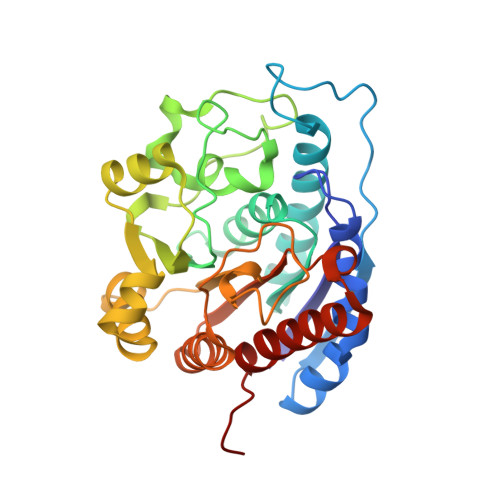Synthesis of quaternary alpha-amino acid-based arginase inhibitors via the Ugi reaction.
Golebiowski, A., Whitehouse, D., Beckett, R.P., Van Zandt, M., Ji, M.K., Ryder, T.R., Jagdmann, E., Andreoli, M., Lee, Y., Sheeler, R., Conway, B., Olczak, J., Mazur, M., Czestkowski, W., Piotrowska, W., Cousido-Siah, A., Ruiz, F.X., Mitschler, A., Podjarny, A., Schroeter, H.(2013) Bioorg Med Chem Lett 23: 4837-4841
- PubMed: 23886684
- DOI: https://doi.org/10.1016/j.bmcl.2013.06.092
- Primary Citation of Related Structures:
4IXU, 4IXV - PubMed Abstract:
The Ugi reaction has been successfully applied to the synthesis of novel arginase inhibitors. In an effort to decrease conformational flexibility of the previously reported series of 2-amino-6-boronohexanoic acid (ABH) analogs 1, we designed and synthesized a series of compounds, 2, in which a piperidine ring is linked directly to a quaternary amino acid center. Further improvement of in vitro activity was achieved by adding two carbon bridge in the piperidine ring, that is, tropane analogs 11. These improvements in activity are rationalized by X-ray crystallography analysis, which show that the tropane ring nitrogen atom moves into direct contact with Asp202 (arginase II numbering). The synthetic routes described here enabled the design of novel arginase inhibitors with improved potency and markedly different physico-chemical properties compared to ABH. Compound 11c represents the most in vitro active arginase inhibitor reported to date.
Organizational Affiliation:
Institutes for Pharmaceutical Discovery, 23 Business Park Drive, Branford, CT, United States. [email protected]


















